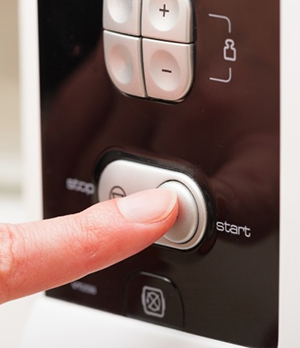 Innovation can often come from unexpected sources of inspiration. Take, for example, ColaLife— a United Kingdom-based charity which noticed that deliveries of Coca-Cola, made to virtually every corner of the globe, included quite a bit of empty, unused space between bottles.
Innovation can often come from unexpected sources of inspiration. Take, for example, ColaLife— a United Kingdom-based charity which noticed that deliveries of Coca-Cola, made to virtually every corner of the globe, included quite a bit of empty, unused space between bottles.
Taking a page from the Internet and web-based packet switching— which delivers small groupings of information, using dynamic bandwidth allocation techniques, in response to changing data loads— ColaLife packages much-needed medical supplies, like oral rehydration salts and nutritional supplements, to developing countries by piggybacking shipments and leveraging the empty, inter-bottle spaces on Coca-Cola palettes.
It is that kind of foresight and efficiency-seeking that is driving food innovation. And start-ups, particularly in the San Francisco area, are disrupting the traditional food services market and re-shaping the way we will eat in the future— as Co.Exist’s senior editor, Ariel Schwartz recently reported.
“A dinner… that couldn’t have taken place a decade ago.”
In her article, Schwartz noted that current innovations in food growing, food processing, manufacturing, packaging and distribution represent necessary steps that the industry must make if we are to avoid a potentially frightening collapse in the future.
“In June, I sat down to a dinner in San Francisco that couldn't have taken place a decade ago,” she wrote. ”
For the appetizer, the long table of guests shared bowls of seasonal salad from Graze the Roof, a vegetable garden located on the roof of Glide Memorial Church. The main course was a frittata with onions (served in a compostable box) from Sprig, a new dining-on-demand service founded by Nate Keller, Google's former executive chef. Dessert consisted of lemon curd mousse with strawberries and mint, prepared with Nomiku, which bills itself as the first [sous vide] immersion circulator made for home cooks.”
The purpose of the dinner party, which was sponsored by the Institute for the Future— a non-profit, Palo Alto-based think tank and creative design studio— was to illustrate the wide-ranging ways in which farmers, food service providers and food manufacturers can change the makeup of consumers’ dinner tables.
A map to the future of food.
The Institute for the Future (IFTF) has produced a colorful, infographic map, displaying the several, overlapping areas in which food innovators are working to disrupt the market. According to the organization, there are five main avenues for innovation: production, manufacturing, packaging, shopping and eating.
Food manufacturers, for example, could increasingly meet consumers’ demands for convenient, easy-to-prepare, healthy food by finding new ways to pre-package, store and deliver easy prep foods.
Keurig, the Institute notes, has been on the forefront of this trend. The company devised a way for consumers to brew a single cup of coffee, reducing overall waste of coffee and water while simultaneously reducing the time and effort consumers must put into brewing their morning caffeine fix— or any of an ever-expanding variety of hot beverages, including beverages marketed for specialized tastes or even for the promotion of wellness.
Indeed, the ability to shake up the market and develop new methods is not limited to small companies and young designers with big ideas, according to Schwartz. In her article, she quoted IFTF’s research and design manager, who reportedly stated that the Institute has launched a Food Futures lab, which specifically seeks to “’from startup entrepreneur types to big food companies.’”
Pre-packaged, sous vide-prepared foods are a potential boom product.
Sous vide preparation— long relegated to the industrial or high-end kitchen— is quickly becoming mainstream both in the small- to mid-sized food service market and, with the advent of home immersion circulators like Nomiku, in the home kitchen.
Sous vide foods, having been prepared under anaerobic conditions, enjoy long shelf lives without the need for many of the preservatives that modern diners are now wary of, so they lend themselves well toward consumers’ increasingly vocal demands for real, naturally-grown and prepared foods.
Like Keurig coffee, sous vide preparation requires minimal effort on the part of the user. One simply enters the desired water bath temperature, turns on the immersion circulator and programs a timer: set, click and move on until it’s time to pull the food bag and either serve the dish, or store it.
Food innovation is bred in the space between what is available now and what could be.
With a little foresight, large and small food service concerns can develop products that increase efficiency, reduce food and energy waste, decrease costs and wow consumers.







